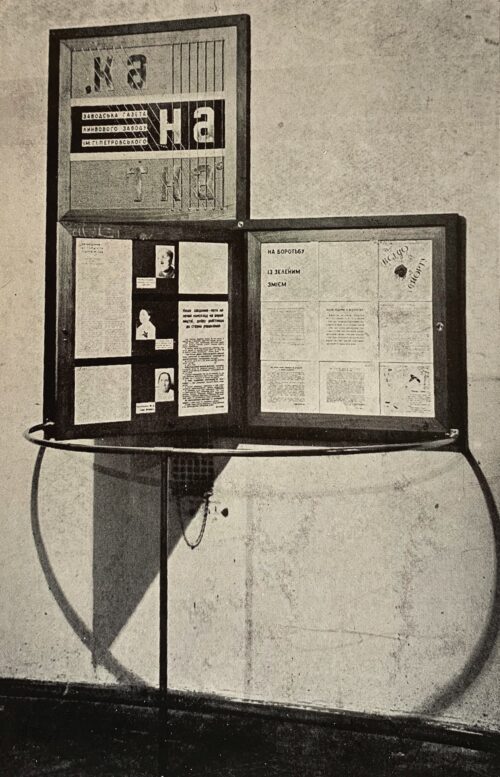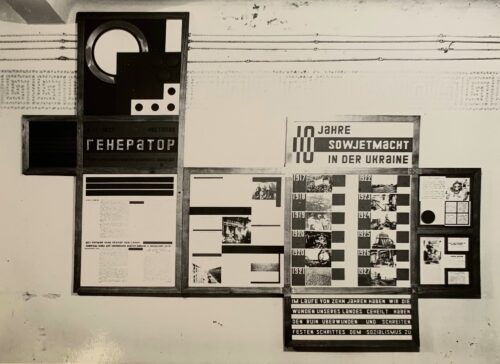The Kharkiv School of Art and Industry
The Artistic Construction programme was established in 1963 at the former Kharkiv Art Institute, which had been reorganized into the Kharkiv Institute of Art and Industry in 1962 with the objective of preparing students for industry. Vasyl Yermylov (1894–1968), an avant-garde artist and leader of Ukrainian Constructivism, who had been at the forefront of artistic life in Kharkiv since the early 1920s, was appointed as a lecturer at the newly established faculty.
It was in 1921 that Yermylov initiated the transformation of the Kharkiv school into an art academy, with a focus on industrial art; it was later designated an institute in 1927. He ran a printmaking workshop there with Ivan Padalka (1894–1937) until 1934. The innovative pedagogy developed by the Bauhaus, the school of arts and crafts founded in 1919 in Weimar, was formative in shaping his understanding of the new role of the artist in industry. In 1921, Yermylov visited Vkhutemas in Moscow, where he spent a month and visited various workshops, including those of Lyubov Popova (1889–1924) and Aleksandr Rodchenko (1898–1956).
In addition to his work as a teacher, Yermylov was also a painter and graphic designer, working with industrial graphics, devising packaging and trademarks, creating his own font, and designing book covers and magazines. He also did small-scale architectural projects, including kiosks, stands, book wagons, and campaign trailers. In 1928, Yermylov designed the Ukrainian section (with El Lissitzky as the chief designer of Soviet pavilion) for Pressa, an international exhibition in Cologne, although he was not allowed to travel there.
Following a lengthy period of enforced inactivity starting in the late 1930s, Yermylov was rehabilitated in the 1960s and thus able to resume his professional activities. The curricula he designed then were based on his teaching experiences from the 1920s. In 1964, Yermylov was commissioned to design a propaganda piece for the Kharkiv 8th Bearing Factory. In collaboration with his students, he created a forty-two metre display wall, consisting of panels mounted in thin wooden frames that made use of collage, photography, typographic composition, and abstract elements reminiscent of Suprematism and Constructivism, two movements that played a central role in giving design (or ‘artistic construction’, as it was called at the time) a more respectable status.
Tetiana Pavlova

